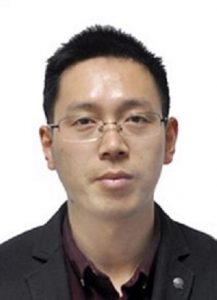 Associate Prof. Weidang Lu
Associate Prof. Weidang Lu
Title: Simultaneous Wireless Information and Power transfer in Green Wireless Sensor Networks
Bio:
Dr. Weidang Lu received the Ph.D. degree in Information and Communication Engineering from Harbin Institute of Technology in 2012. He was a visiting scholar with the Nanyang Technology University, Singapore, The Chinese University of Hong Kong, China and Southern University of Science and Technology, China. He is currently an Associate Professor with the College of Information Engineering, Zhejiang University of Technology, Hangzhou, China. His current research interests include simultaneous wireless information and power transfer, wireless sensor networks, cooperative communications, and physical layer security for wireless systems. His works received several awards, including second prize of Jiangxi natural science award, third prize of Zhejiang natural science award, best paper awards of WiSATS 2019 and CSPS 2019.
Abstract:
Simultaneous wireless information and power transfer (SWIPT) can enable the wireless sensor nodes harvest energy simultaneously with information receiving, which can effectively prolong the lifetime of wireless sensor networks (WSNs) and improve the energy efficiency. In practical, how to realize SWIPT in the low cost and low complexity WSNs are both practically appealing as well as challenging. Substantial research efforts from both academia and industry have been devoted to advancing this exciting new field, with remarkable progress made in the past couple of years. In this talk, I will present our recent work on SWIPT schemes for WSNs. I will also highlight our works in energy efficiency optimization with SWIPT OFDM cooperation. Finally, I will conclude the talk by pointing out some future directions in this topic area.
Prof. Haibin Wu
Title: Surgical navigation system and deep learning human body cavity Slam
Bio:
Dr. Wu is currently a Professor of department of Instrument science and Technology and also the Dean of School of Measurement and Control Technology and Communication Engineering at Harbin University of Science and Technology, China. Dr. Wu’s research interests include machine vision, medical virtual reality, deep learning image
classification. He has directed and participated in over 20 research and development projects. He is the author of three books, more than 40 articles, and more than 20 inventions. Dr. Wu is an Editorial Board Member of the Chinese Journal of Liquid Crystals and Displays. He was the Director of the Precision Machinery Branch, China Instrumentation Society, and the Director of Visual Inspection Committee of Chinese Graphic and Image Society. He is an Associate Editor in-Chief of the Journal of Harbin University of Science and Technology.
Abstract:
AR surgical navigation system realizes the fusion and superposition display of virtual organs and real scenes, which is convenient for doctors to operate. Firstly, the application or research of augmented reality technology in different clinical fields of surgical navigation system is reviewed. Furthermore, in view of the fact that augmented reality technology provides a better display mode for surgical navigation system, we classify and summarize the intraoperative augmented reality display technology from three ways: video display technology, stereo display technology and projection display technology. Finally, the development, methods and characteristics of projection distortion correction techniques for analytical and non-analytical surfaces are reviewed, aiming at the key technologies of the most promising projection display technologies. In the end, the difficulties and future development trend of projection display technology are prospected. Further more, deep learning has made excellent achievements in many fields of computer vision, such as target recognition, tracking and segmentation. Combined with deep learning, it has become a development trend of SLAM to solve registration problems in traditional SLAM.


